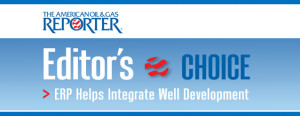THE OPPORTUNITY
In May 2021, Magnum Forge was in the middle of leading a W Energy Software ERP implementation when our client announced an acquisition of properties in their core area of the Permian Basin. The acquisition involved 112 operated wells, 90 non-operated wells, and 1,313 leases (1,984 total agreements). As part of the purchase sale agreement, our client agreed to take over daily operations of the wells in 45 days, which meant that we had to have the seller’s data loaded and verified in our client’s field data gathering (FDG), production accounting, and well lifecycle data management solutions in this short timeframe. The remaining accounting and land data had to be loaded and verified on a 90-day transition services agreement (TSA) timeline. As we were closing out this acquisition, our client announced another in September 2021 while the W Energy ERP project continued towards a 2022 go-live. This acquisition was also in the Permian and involved 183 operated wells, 131 non-operated wells, and 391 leases (1,676 total agreements). This time, the operations takeover was in a scant 28 days and the TSA period was 75 days.
Magnum Forge was asked to help our clients meet these aggressive timelines based on our track record of delivering on aggressive project timelines and our ability to coordinate the acquisition activity with the W Energy ERP implementation. In addition, our operations client lead for the integrations said that they had done several acquisitions during his tenure without outside assistance, and he wanted Magnum Forge to make these “more thorough and organized.”
THE PROJECT
A key first step in any acquisition project is assessing the seller’s systems to make sure all the data required by our client is held somewhere. Once the systems are identified, we need to get a first cut of that data as quickly as possible. In this case, the FDG, production accounting, and well lifecycle data were of critical concern to meet the short timeframe for taking over field operations. Based on the operations handover timing and the length of the TSA’s, we made an early decision to load all the data into our client’s legacy systems, since the W Energy ERP software would not be live yet when our client was required to take over operations, accounting, and land functions. This involved loading data and testing it in 13 legacy systems in use by our client.
Magnum Forge provided resources to load FDG, production accounting, and land data and to manage the entire project, including managing the efforts of seven other service providers and multiple users on our client’s side. Magnum’s project manager laid out strict milestones for acquiring and assessing the seller data, transforming it to work in our client’s systems, having users validate it and identify issues, and preparing to take on the management of the new properties in our client’s systems. This provided our client with a single point of contact for the acquisitions when issues or questions arose. Magnum Forge documented all decisions and published them for the entire acquisition team to see, which was “worth every penny by itself,” according to one of our clients.
The tight timelines for operations handover (45 days for the first acquisition and 28 days for the second) were made more difficult due to difficulties in getting the data from the sellers. The first acquisition’s data was received with only 36 days to stand up the properties in the FDG, production accounting, and well life cycle systems. For the second acquisition, there were only 13 days after the receipt of data from the seller to stand up the properties in the operations systems. These delays also trimmed the amount of time available for the two TSA periods (90 days and 75 days, respectively for the two acquisitions) to get the accounting and land systems ready to conduct accounting and land processes for the new properties. Magnum was ready for the challenge, working the hours needed to get the data we owned into the systems and tested, and pushing the other service providers to march to the same timelines for systems they owned.
THE OUTCOME
Magnum Forge hit all the milestones required for work we owned and managed the client personnel and other service providers to do the same. For both acquisition, operations control moved to our client on time and with few issues – a remarkable accomplishment considering the complexity of data and processes and the tight timeframes. Accounting and land integrations went equally well and on a less frantic timeframe but still within the 90 and 75-day transition services agreement requirements, helping our client avoid additional TSA charges.
A key factor in the two acquisitions was coordinating the data loads for the two sets of new properties with the data conversion and testing schedule of the ERP implementation project such that the acquisition timelines were met and the new data could be validated and tested in the new ERP prior to go-live. Magnum Forge was able to coordinate dependencies between the two acquisition projects and the W Energy implementation project to get data from both acquisitions into a test data load for user validation and testing prior to the final move to W Energy. This allowed our client to see the data from the acquired properties and test the new properties along with their legacy properties.
Debriefing sessions from both acquisition projects garnered praise from our clients for our dedication and leadership. We are ready for the next acquisition!

